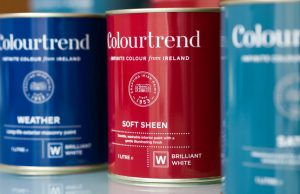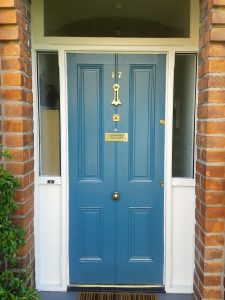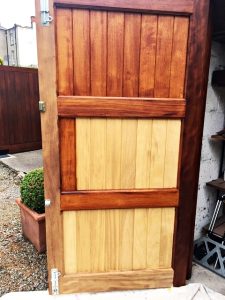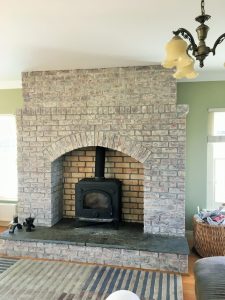How to remove mould and prevent mould from growing again
In most cases in modern houses with central heating and good damp proofing, mould is rare enough, but when discovered it is generally found in bathrooms. The heat from showering and bathing causes steam which condenses mostly on the exterior walls of the bathroom, eventually causing mould.
Mould in bedrooms on exterior walls can also be caused by hot air in the house condensing as it hits the cold surface of your exterior wall. A vent in the room and further insulation will reduce this problem. The bottom line is moisture causes mould.
Killing the mould
Most strong household bleach will kill mould, but it is not really the most eco-friendly way to remove mould. You must also observe health and safety when using bleach – this includes using eye protection, gloves and possibly a mask, if needed.
Eco-friendly ways to kill mould
There are more eco-friendly ways of killing mould, namely vinegar sprayed directly on to the affected area, left for a few hours and then washed away with water. If you do not like the smell of vinegar you can add a few drops of essential oil which will reduce the odour.
Tea tree oil is another great natural antibiotic and mould killer. Mix approximately two teaspoons in a cup of water, spray it on the surface and leave it for a few hours. Again, rinse away with water.
Not forgetting the old, reliable baking soda! This is an amazing house-cleaning and multi-purpose product. Mix it with water so that you have a saturated solution and a little vinegar, and once applied to the surface it will kill the mould. Lightly scrub and wipe off the area. For any stubborn remaining mould, add a more concentrated baking soda on a sponge, lightly scrub and you are done. This is the best way if you want no odour at all in your bathroom.
For more tips, Google “Green cleaning solutions”.
Repainting your bathroom to prevent mould
There are now very good paints on the market that are anti-mould and mould resistant for bathrooms and kitchens. We recommend using these products. The more expensive ones tend to be better, but we have found that the coverage is not great. Mix the product with a normal, good quality, matt emulsion, about two bathroom paint to one regular matt emulsion, and this makes for far better coverage, whilst still providing the anti-fungal properties.
Preventing mould from growing after your fresh paint job
Moisture, humidity, condensation and bad ventilation are all key factors to mould growth. If you live by the sea or a large body of water, the moisture levels in the air are going to be much higher than in somewhere like a city. Therefore, the chances of mould growth is greater.
In any and all cases where moisture levels have to be reduced. The best way of doing this is:
- Better ventilation in your home, particularly in affected rooms.
- A dehumidifier makes a huge difference as it takes the moisture directly from the air. My advice is to buy a good one. Use the laundry setting on it which will dry your home – and your clothing in the winter!
- Drying clothes inside the home is another major cause of added moisture. You will also find that your heating systems will be much more effective, as non-moist air is much easier to heat and uses far less energy.
- Improving insulation will help greatly as this also warms the air in your home and prevents condensation (warm air hitting cold exterior walls or inner ceilings).
Why does mould grow?
Mould lives on organic material, including wood, carpet, food, paper, insulation, wallpaper, paint, wallpaper glue, plasterboard, fabrics, cotton, books, leather, chipboard, furniture, dust, ceiling tiles and almost any other organic material. Non-organic areas like plastic, ceramics, metal and glass should be scrubbed and cleaned regularly to prevent a layer of dirt (organic material) from forming as this will also reduce the potential of mould.
Mould spores travel in the air inside and out all the time. Reducing the number of spores will reduce the chances of getting mould, so vacuuming regularly will remove a lot of spores from furniture carpets and curtains.
Also letting in as much natural light as possible throughout your home during the day will help, as mould likes dark places whereas sunlight kills mould.
Get in touch with Impressions Painting and Decorating today!
For bespoke hand-painted kitchens, and expert painting and decorating, please feel free to call Paul on 087 270 4879 or use the contact form.




